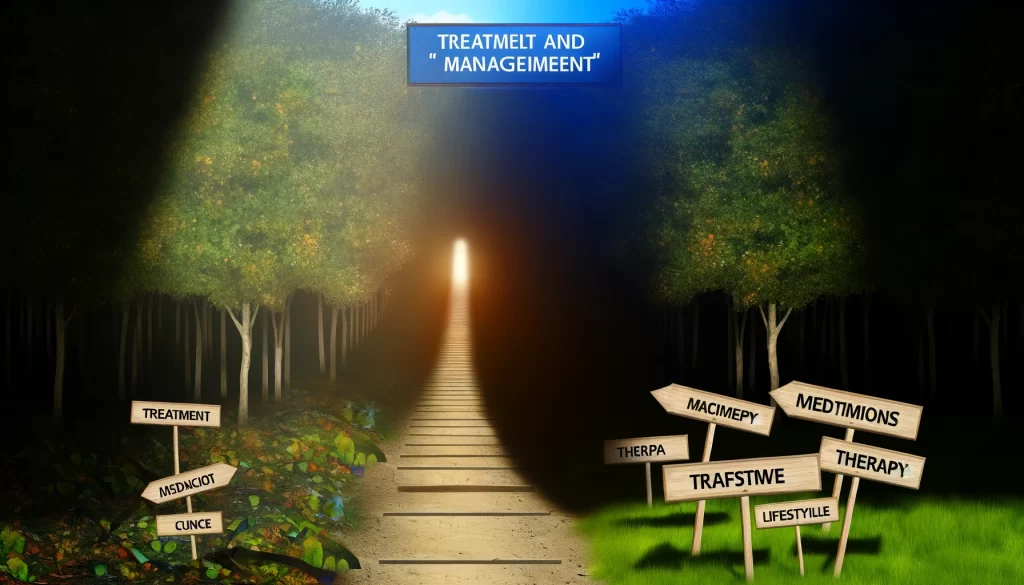Physical Address
304 North Cardinal St.
Dorchester Center, MA 02124

In today’s fast-paced world, where the pressure to perform is relentless, it’s not uncommon for individuals to experience feelings of anxiety and depression. Although they are often mentioned in the same breath and share some overlapping symptoms, understanding the critical differences between anxiety and depression is pivotal for effective management and treatment. This article delves into the heart of these differences, armed with our primary keyword, “anxiety,” and our secondary keyword, “depression,” aiming to demystify the two conditions.

Anxiety, a complex emotion intertwined with the fabric of human survival, serves as a primal response to perceived threats. It’s a sentinel, alerting us to dangers that demand our attention and action. However, when the mechanisms that govern this alert system become overly sensitized, the result is an anxiety disorder. This condition transcends normal worry or stress, evolving into a persistent state where fear and apprehension dominate, often without a clear or present danger.
Symptoms of anxiety are multifaceted, encompassing both the physical and psychological realms. Individuals may experience a rapid heartbeat, shortness of breath, and an overwhelming sense of unease that disrupts daily activities. Psychological manifestations include a pervasive worry about future events, a scenario where the mind becomes entangled in a web of “what ifs,” leading to a cycle of incessant thought patterns that challenge one’s ability to focus and maintain a sense of calm.
Understanding anxiety’s core involves recognizing its dual nature as both a necessary component of human survival and a potential disorder when its intensity and frequency exceed normalcy. This duality underscores the importance of addressing anxiety not just as a symptom to be managed but as a signal that warrants a deeper exploration of underlying issues and concerns.

Depression delves deep into the psyche, manifesting as more than mere sadness or a fleeting mood. It embodies a profound and pervasive sense of emptiness and despair, casting a shadow over one’s life. At its core, depression affects how one feels, thinks, and handles daily activities, leading to a significant impairment in both personal and professional realms. The hallmark of depression is not just the intensity of sadness, but also the duration and depth, where individuals find themselves in a state of hopelessness, unable to find pleasure in almost anything.
Symptoms extend beyond the emotional, impacting physical health and leading to changes in appetite, sleep patterns, and energy levels. Individuals may experience a noticeable weight loss or gain, insomnia or hypersomnia, and a persistent lethargy that makes even simple tasks seem insurmountable. Moreover, depression can erode self-esteem, fostering feelings of worthlessness and excessive guilt, and in severe cases, it can conjure thoughts of death or suicide.
Understanding the depths of depression requires recognizing it as a complex mental health condition that affects the body and mind. It’s a disruption of the brain’s chemical balance, influenced by a combination of genetic, biological, environmental, and psychological factors. This multifaceted nature of depression underscores the importance of comprehensive treatment approaches that address the root causes and symptoms of this debilitating condition.

Distinguishing between anxiety and depression is crucial, yet challenging, as they often coexist and share overlapping symptoms. However, understanding their distinct characteristics can illuminate the path to targeted treatments and better outcomes. Anxiety is primarily characterized by an excessive and often irrational worry about future events, manifesting in physical symptoms such as restlessness, a racing heart, and rapid breathing. It’s rooted in anticipation, a vigilance for potential threats that might never materialize.
Depression, conversely, is marked by a deep sense of sadness, loss, and disinterest in life. Its symptoms are more inward-looking, with sufferers experiencing a pervasive sense of worthlessness and a lack of motivation that can lead to physical symptoms like extreme fatigue and changes in sleep or appetite. Where anxiety anticipates the future with dread, depression often reflects a despair that colors one’s current existence, making it feel devoid of joy and color.
The key to distinguishing between the two lies in their core emotional states and physical manifestations. Anxiety’s hallmark is fear and worry about what’s to come, while depression is defined by an engulfing sadness and a loss of interest in the present. Recognizing these differences aids in diagnosis and informs a more nuanced approach to treatment, ensuring that individuals receive the specific support they need to navigate these complex conditions.

The treatment and management of anxiety and depression require a nuanced approach that considers the unique aspects and needs of the individual. Recognizing the distinctions between these conditions is crucial for implementing effective strategies. For anxiety, cognitive-behavioral therapy (CBT) is often the cornerstone of treatment, focusing on altering thought patterns and behaviors that fuel anxiety. Techniques such as exposure therapy are also used to gradually reduce fear and avoidance behaviors. Medications, including SSRIs and benzodiazepines, may be prescribed to manage symptoms, particularly in severe cases.
Depression treatment also frequently involves CBT, which helps patients identify and challenge negative thought patterns to improve mood and behavior. Antidepressant medications play a key role, adjusting neurotransmitter levels to affect mood positively. In some instances, psychotherapy may be combined with medication for a more comprehensive approach.
Lifestyle changes are pivotal in managing both conditions. Regular physical activity, a balanced diet, adequate sleep, and stress-reduction techniques like mindfulness and meditation can significantly impact overall well-being and resilience. Social support is equally important, as isolation can exacerbate symptoms. Ultimately, the success of treatment hinges on a personalized approach, incorporating a combination of therapies, medications, and lifestyle adjustments tailored to the individual’s specific needs and circumstances.

Understanding the critical differences between anxiety and depression is essential for those seeking not just relief but also a pathway to a more fulfilling and healthy life. Despite their differences, both conditions present the possibility of effective treatment and management when approached with tailored and informed strategies.
At the heart of this journey is the pursuit of professional help — an act of bravery that opens the door to recovery. Organizations like the National Institute of Mental Health (NIMH) [https://www.nimh.nih.gov/] provide comprehensive resources that can enlighten both those affected and their loved ones about the symptoms, treatments, and ways to seek support for anxiety and depression.
Embracing treatment and management of these conditions is not a sign of weakness but a testament to strength and determination. The journey may be challenging, but it is filled with potential for growth and resilience. The social stigma surrounding mental health is slowly being dismantled, promoting more open conversations and a deeper understanding of these conditions.
For those navigating the challenges of anxiety and depression, remember: you are not alone, and help is available. With the right support and targeted strategies, regaining control over your mental health and achieving a fulfilling life is entirely possible. This article aims to be a beacon of hope, offering insight and understanding into the complex yet conquerable realms of anxiety and depression.




